Inca Trail Trek
Trek the Inca Trail to Machu Picchu and experience Incan history
Peru | Days: 8 | From: $3,075
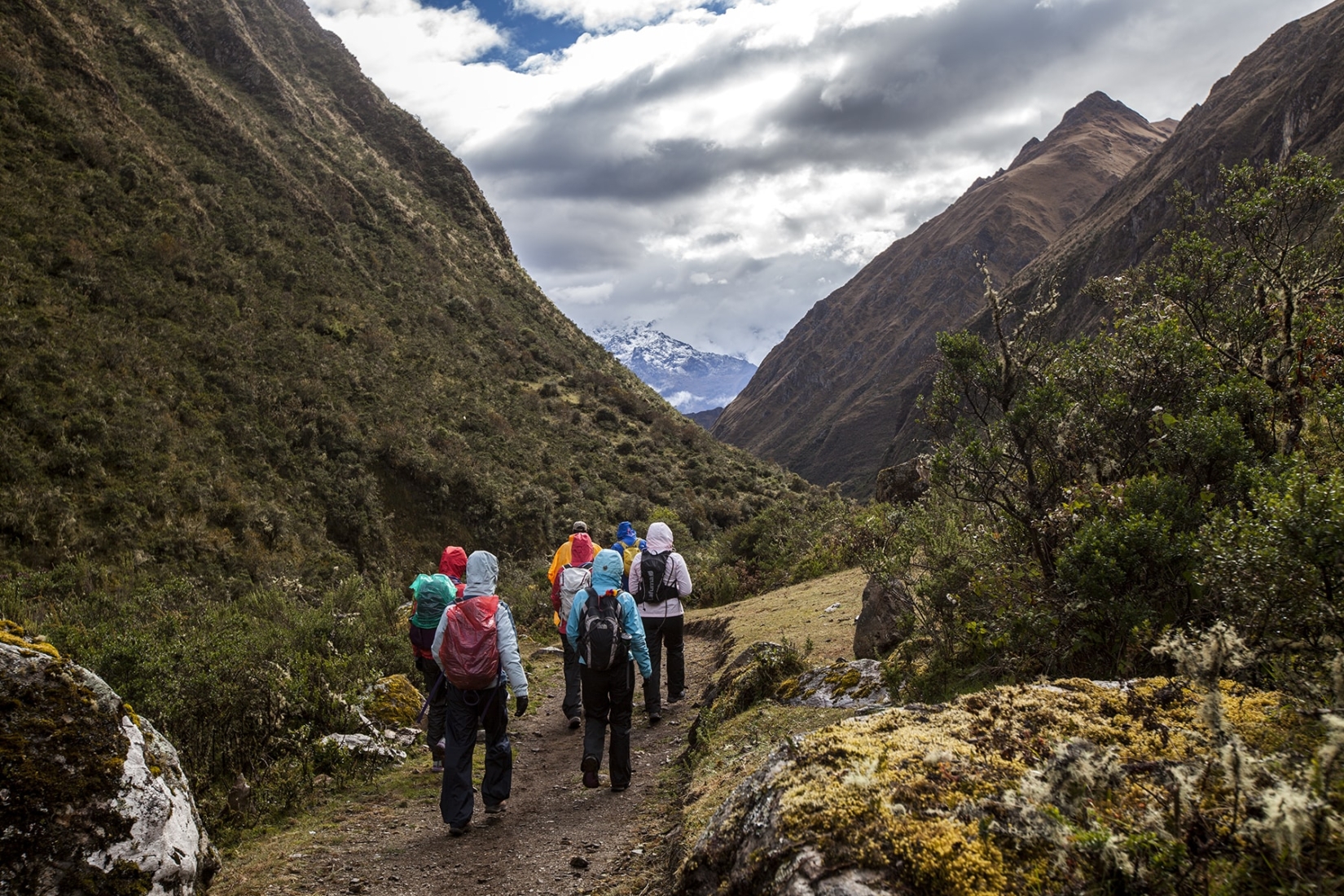
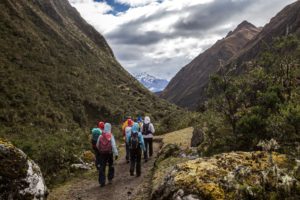

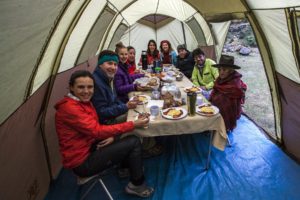

Pre-scheduled group tours depart:
Private custom departures are available every month. To inquire on a custom date, please contact us!
8 Days / 7 Nights
Moderate*
Activities: Trekking
*Please refer to our Trip Activity Level Guide for more information


A member of The Explorer’s Passage team will greet you as you come off the plane in Cusco and help with transfers straight to your hotel. It’s an exciting ride, as you catch your first glimpse of the Vilcabamba mountains looming large on the horizon (you’ll be trekking in them soon!) and witness the wonderful colonial-era building work of the capital of the Incas.
The afternoon is yours to use as you wish. You can either explore the city – the immersive maze of streets and craft sellers in the San Blas neighborhood and the taste-bud-tempting Chocolate Museum are the big draws for us. Or, simply relax and unwind after your flight.
Later on, you’ll head over to one of our favorite Cusco restaurants for a hearty meal and an historical introduction to Machu Picchu delivered by a seasoned Nat Geo explorer or anthropologist.
Prepare to be enthralled by Cusco. This UNESCO World Heritage Site of a city is what fills the first full day of our Salkantay Hidden Valley itinerary. After breakfast, you’ll embark on a walking and van tour that takes in all the highlights…
You’ll drive up to the formidable citadel of Sacsayhuaman, which perches on the hillsides north of town with its cyclopean walls and incredibly intricate stonework. You’ll venture to the remains of Pukapukara, a defensive installation that dates back 600 years. Before that, there’s time to wonder at the pink-tinged facade of elegant Cusco Cathedral and see what survives of the legendary Qoricancha temple, a great worshiping space that was once clad in gold from top to bottom before the coming of the Spanish.
In the afternoon, the whole group will gather for a pre-trek briefing to ensure everything’s in order for our departure into the high Andes the following day. You should also have some free time to explore Cusco at your own pace.
Feet itching to get on the trail? Good! Today’s the day we leave Cusco and enter the Andes. Chances are that the drive to the starting point will whet the appetite aplenty. It skirts the base of the Vilcabamba range before crossing Tika Tika Pass. That’s where you’ll catch your first broadside of snow-mantled Apu Salkantay, soaring 20,472 feet above sea level.
The terrain turns rugged and rural from there on as you enter the high-up plateaus around the village of Misquiyaco. These are untouched lands far away from the hustle and bustle of Cusco, with jagged peaks dominating the horizon, llamas speckling the fields, and rare cloud forests hugging the sides of the ridges.
Talking of cloud forest…we take our first steps on the Salkantay Hidden Valley route amid the uber-rare Meso-Andean Relict Forest. This unique habitat is packed with flowering Chachacomo trees and hardy, high-altitude shrubs that are found basically nowhere else in the country. At some point in the five-hour trek, we break out of the treeline and come onto the grassy slopes of the higher Andes. That’s where we’ll camp for the night, at the designated campground in Acopía.
Stretch out the legs because our fourth day starts with about four or five hours’ uphill climbing. It’s not steep but it’s constant. The rewards are pretty fantastic, though. This high up, encounters with majestic Andean condors aren’t uncommon.
Once we cross the Tambomachay Pass, the route suddenly offers up the first sublime visions of Apu Salkantay. You’ll gaze straight across to the south face of the hulking peak, where seracs of chiseled ice protrude over buttresses of windblown rock. Behind it, the jagged backbone of Humantay mountain is also visible.
We have lunch somewhere up there in the company of the great glaciated peaks. Then we descend fast to meet the southern end of the Pampacahuana Valley, setting up camp in what’s surely one of the most remote and desolate sections of the Peruvian Andes.
The icy spires of Salkantay mountain fade into the background as we push north through the Pampacahuana Valley on the fifth day. Notice how the land becomes lusher, more fertile, less rugged. This is a region filled with farming communities that have been almost totally unchanged for centuries.
However, your foray into lower altitudes is short lived. The route creeps upwards again at the northern end of the valley, where it skirts the side of the gurgling Cusichaca River and brushes up past the treeline once more.
Eventually, it hits the untrodden Incan site of Paucarcancha. This is one of the hidden jewels of the Inca Trail that not many people see, since it requires a detour off that famous route. Notice the ruined store rooms, which were once used to house grain and potatoes for the empire.
The long day of trekking ends with a final leg that sees the group connect up with the Classic Inca Trail route. But that’s not the only reward, because the campground at Chamana is for the sole use of people on our Salkantay Hidden Valley tour – it’s even got hot showers!
The final trekking section of the Salkantay Hidden Valley route weaves back west to the dramatic ruin of Huayna Q’ente. Again, this is one of the Incan sites that most folks don’t get to see, since it perches on a spur off the main trekking paths. The highlight is a beautifully apexed stone building with a large double door that crowns a series of narrow agricultural terraces. Amazing stuff.
After that, we descend all the way to meet the main Inca Trail route at Piscacucho. You’ll be treading in the footsteps of legends like Hiram Bingham at this point, since this was the very same path used by his daring expeditions to Machu Picchu in the early 1900s. We’re there to connect up with a transfer to Ollantaytambo, where we hop on the train and travel all the way to Machu Picchu Village ready for our historic tour in the morning.
The day you’ve all been waiting for: Machu Picchu. A minibus whisks us up from the hotel in Machu Picchu Village and then we embark on a guided walking tour of the site. It’s something you’ll never forget – ancient houses, marketplaces, sacrificial altars, ruined temples, and more abound within. A dedicated guide will spin tales of the Pre-Columbian peoples and the importance of the location as you go.
You can opt to scale one of the mountains around Machu Picchu, too. Huayna Picchu is on the south side. It’s about 1.5-2 hours to get to the top but the view back over the UNESCO site is one of the best there is.
Either way, you’ll descend back to Machu Picchu Village by the early afternoon and board the train bound for Ollantaytambo. There, we’ll have a team ready and waiting to take you back to modern civilization in Cusco.
The final day of the tour. The group meets for one last breakfast together. We’ll bid farewell, share some final memories of the adventure, and then transfer back to the airport for your flight home.
Please contact us for a complete detailed itinerary.
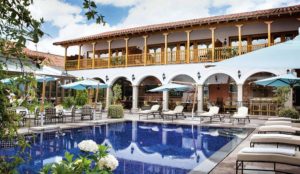
Bedding down in a former convent isn’t necessarily what you might expect. Lovingly restored, 17th-century architecture gives each artistic room and suite a distinctly colonial feel. Recline on a four-poster bed splashed with hand-embroidered silk coverlets. Bathe beneath hand-painted frescos using soap perfumed by the Palacio’s own flowers. Some suites feature original Inca stonework; others boast balconies with hypnotic views of Cusco’s distant, mist-wrapped mountains. Hotel website
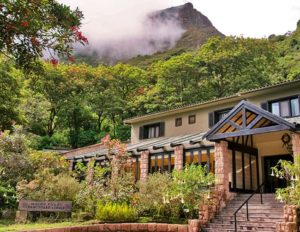
Sitting in the shadows of the Lost City, our lodge is an oasis of calm before or after a day exploring Machu Picchu. Unwind with a yoga session, take part in a traditional shaman ceremony in the garden, or sip muña tea in the Tampu Bar. Tranquility, wonder and beauty are at the heart of our unique experience. Cool botanical fabrics are offset by cherry-colored woods. King-sized beds provide space to unwind. Outside your windows, the mountains ripple into the distance.Signature dishes like a Jungle Landscape salad or Sacred Valley grilled trout evoke the Andean setting. Take a seat and let our authentic menu kickstart your Peruvian adventure. Hotel website

Sitting just opposite the legendary Qoricancha temple in the beating heart of ancient Cusco, the Palacio del Inka is often touted as the single finest hotel in the whole country. It’s housed in a 400-year-old estate that once belonged to a Spanish conquistador. These days, guests can enjoy a sprawling indoor spa and pool facility and haute cuisine at the Inti Raymi bistro, where it’s all about local delicacies sourced from the Sacred Valley itself. Hotel website
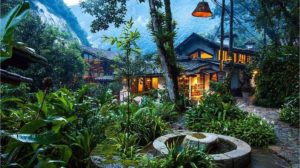
Visit Machu Picchu in style by opting for the five-star Inkaterra Machu Picchu Pueblo Hotel. It’s a real wonder of a resort, set over 12 acres of tropical forest and cloud forest that plays host to more than 200 species of bird. The rooms – each in a rustic adobe casita – are tucked within all that, woven together by boardwalk trails. Onsite, you’ll find the Unu Spa, which offers chocolate treatments that originated in Pre-Columbian Peru, and a gorgeous dining space with views of the babbling Vilcanota River. Hotel website

The Novotel Cusco is conveniently placed just a short stroll from the Plaza de Armas – the buzzing heart of the erstwhile capital of the Inca. It effortlessly blends colonial styles and modern design to create a comfy space that converges on a peaceful inner courtyard. Rooms come with free WiFi, flat-screen TVs, and workstations. Hotel website
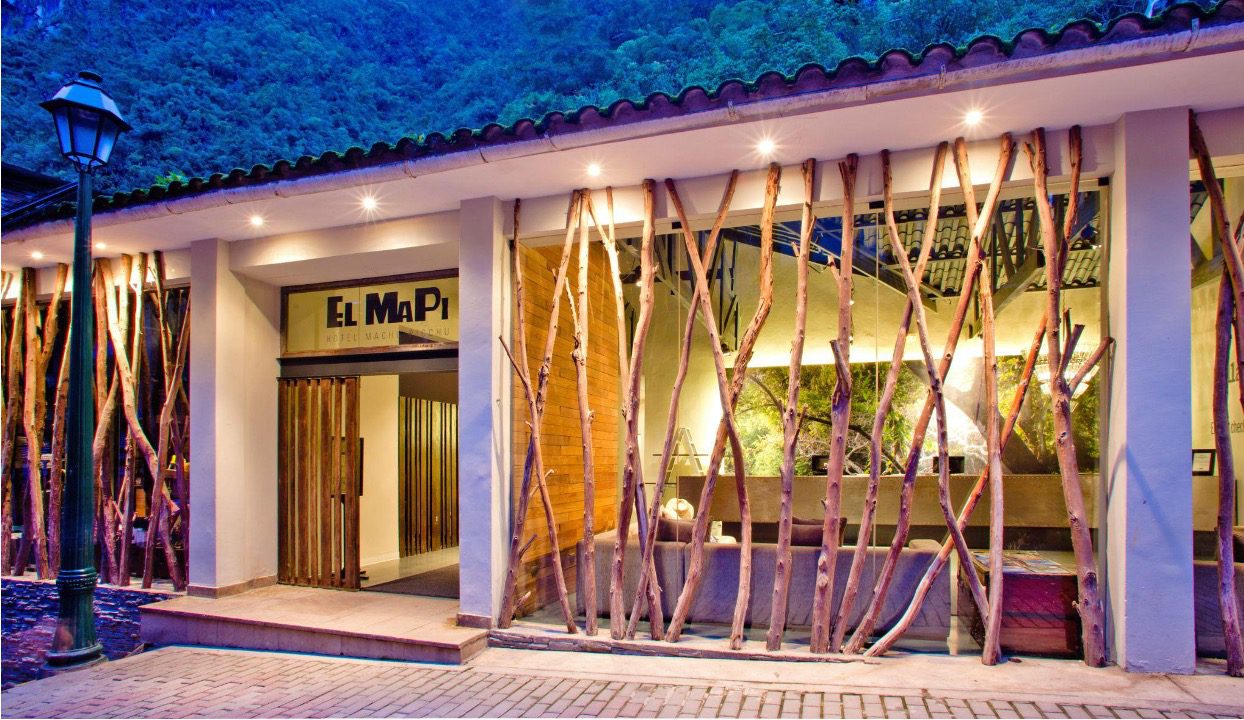
The end of the Salkantay Hidden Valley trek takes you to this charming hotel in the heart of the Machu Picchu Pueblo area. Stroll between the outer walls made from gnarled eucalyptus branches and into the minimalist lobby, were the scents of Peruvian coffee emanate from the on-site café. Rooms have a contemporary edge and access to the Spa Del Bosque, where guests can soothe their muscles in pine saunas and heated baths. Hotel website

During the Salkantay Hidden Valley trek itself, you’ll be staying in what we like to call Moving Villages. Our campsites are set up each day in some of the most breathtaking locations in the Andes north of Cusco. Some nestle next to lush cloud forests. Others have views of the snow-tipped summits. A team that typically consists of over 15 porters and chefs helps to make them a reality. They bring a hint of luxury to the wilds, carrying proper dining tables, dedicated toilet tents, and plush sleeping pads in tow. Some of our campgrounds even boast showers upon request!
The Salkantay Trek is suitable for all levels of hiker, though total beginners might need to train before they embark on the journey. Remember that the route can be physically demanding, with days of up to seven hours of hiking at altitudes that go up to over 15,000 feet above sea level.
Layering is key. A thermal base layer combined with a sweat-wicking hiking top is a great idea. On the legs, convertible trekking trousers usually work well. You’ll also need a comfy pair of hiking shoes or boots sturdy enough to withstand long days on the trail, effective waterproof layers, and heavier thermal gear for the evenings, when temperatures can plummet.
The highest altitude you’ll reach on the Salkantay Hidden Valley trek is 15,800 feet (4,800 meters) above sea level. It comes on the second day of the hike at the Cruzjasa Pass, where you’ll also get stunning views of Apu Salkantay mountain.
Yes, everyone on the Salkantay Hidden Valley trek visits the UNESCO site at Machu Picchu. The trail actually joins up with the traditional Inca Trail at Piscacucho. From there, we catch a transfer and a train to Machu Picchu Village ready for a whole morning’s exploration amid the incredible ruins.
The best time of year to do the Salkantay trek is the dry season in Peru. That runs roughly from May to November. The main bonus is that skies are likely to be clear, which means better views of the snow-capped Andes and the ancient Incan ruins throughout.
The Classic Salkantay Route is seen as one of the best alternatives to the Inca Trail, especially for adventurers who prize nature over human history. The path takes you higher and deeper into more remote parts of the Andes. The Salkantay Hidden Valley trek is a variation on the Classic Salkantay Route that’s even more remote.
The Salkantay Hidden Valley trek is considered moderately difficult. It’s a bit more physically demanding than the Classic Inca Trail route but about the same as the Classic Salkantay route. That’s mainly down to one or two long days of trekking and the need to cross passes at over 15,800 feet (4,800 meters) above sea level.
No other travel operator in the industry gives as much personalized attention to clients before their trip as we do. We are deeply involved in the pre-planning process by offering multiple calls in the months leading up to the departure date. This allows you to directly communicate with us about trip preparation, experience, and training, as well as ask any questions you may have about the trip.
Additionally, our experienced support team handles all the details of your in-country transportation, lodging, meals, tours, permits, and other activities. We also provide a comprehensive pre-departure information package that includes trip details, necessary forms, and a packing list.
At The Explorer’s Passage, we understand that a comfortable and relaxing stay is an essential aspect of any travel experience. That’s why we are proud to offer some of the best hotel options that Peru has to offer. Our hotels in Cusco, Sacred Valley, and Aguas Calientes boast some of the finest rooms, amenities, and services available, ensuring that our clients have a memorable and enjoyable stay. We take great care in selecting only the best hotels for our clients, with a focus on comfort, convenience, and exceptional service. With our three levels of hotel star packages, we guarantee that you will find the accommodation that best suits your needs and preferences. From luxurious and upscale hotels to charming and cozy lodges, we have something for everyone.
The Explorer’s Passage is a proud member of Sustainable Travel International, a partner/supporter of the Leave No Trace Center for Outdoor Ethics, as well as a supporter of the Center for Responsible Travel (CREST). In addition to ‘Leave No Trace’ principles, the concepts of sustainability and responsible trekking are at the forefront of each Inca Trail tour. As part of this commitment, we take several actions such as reducing the usage of single-use plastic, carrying back all our waste, powering equipment with portable solar panels, and using biodegradable soaps. Additionally, we give priority to using organic, locally-sourced ingredients in our meals, composting food scraps, and minimizing disturbances to wildlife and the Sacred Valley communities. We also strictly prohibit the collection of plants, rocks, or other items along the trail, and only follow authorized paths to prevent any harm or damage to archaeological and cultural sites, thereby preserving them for future generations.
Trek the Inca Trail to Machu Picchu and experience Incan history
Peru | Days: 8 | From: $3,075
Experience El Calafate, El Chaltén & Ushuaia and explore the diverse landscape of Patagonia
Argentina | Days: 7+ | From: $2,995
Hike in the heart of Torres del Paine National Park in Chile
Chile | Days: 6+ | From: $2,350